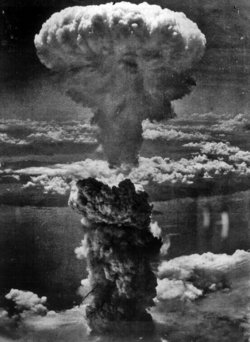| FOR IMMEDIATE RELEASE | CONTACT: US Public Interest Research Group |
| New Report Finds One-Third of All Americans Threatened by Soot Pollution Air Pollution Bill Could Make Situation Even Worse | |
| WASHINGTON - January 19 - Ninety-six million Americans—32% of the population—live in areas with unsafe levels of fine particle, or “soot,” pollution, according to a new report released today by the U.S. Public Interest Research Group (U.S. PIRG). The report is a comprehensive analysis of levels of fine particle pollution in the U.S. in 2004, based on a survey of state environmental agencies. “Soot pollution is a serious health risk. Children, senior citizens, and even healthy adults suffer asthma attacks and other health problems from soot pollution,” said U.S. PIRG Clean Air Advocate Emily Figdor. Coal-fired power plants and diesel engines are the largest sources of fine particle pollution. Fine particle pollution is the nation’s deadliest air pollutant—and one of its most pervasive. Because of their small size, fine particles can bypass the body’s natural defenses, such as coughing and sneezing, and lodge deep within the lungs or even pass into the bloodstream, causing serious respiratory and cardiovascular problems, such as asthma attacks, heart attacks, and lung cancer. Fine particle pollution cuts short the lives of tens of thousands of Americans each year, according to EPA. EPA estimates that particle pollution shortens the lives of its victims by an average of 14 years. The new report, called "Plagued by Pollution", is based on a U.S. PIRG survey of the environmental agencies in all 50 states and DC. The report looks at all of the instances in 2004 when pollution levels exceeded EPA’s two health-based air quality standards for fine particle pollution. EPA’s “annual” standard is based on how much fine particle pollution is safe to breathe on a regular, everyday basis, while EPA’s “24-hour” standard is based on how much fine particle pollution is safe to breathe on any one day. Both types of exposures are associated with illness and death. Key findings for 2004 include the following: • Fine particle pollution exceeded the annual and/or 24-hour health standards in 55 large, mid-sized, and small metro areas in 21 states, exposing 96 million people to this health threat. Senator Carper of Delaware plans to reintroduce his air pollution bill, the Clean Air Planning Act, within the next few weeks. Unfortunately, as drafted in 2003 (S.843), the bill would weaken or eliminate critical Clean Air Act protections, including the New Source Review (NSR) program, protections for parks and wilderness areas, and the requirement that each and every power plant reduce its mercury emissions to the maximum extent. Because the bill weakens facility-specific requirements, individual power plants could increase their fine particle pollution under the bill, further exacerbating this already pervasive public health problem. For instance, an analysis of data from EPA’s own consultants estimates that eliminating the NSR program for existing power plants would be so significant that it would cut short the lives of 70,000 Americans in the next two decades. The NSR program requires aging power plants to eventually install modern pollution controls. “To protect public health, Senator Carper should substantially strengthen his bill. Right now, it would make the problem worse and too many Americans already suffer health problems from breathing polluted air,” said Figdor. | |
Thursday, January 19, 2006
One Third of American sEexposed to Soot....
Subscribe to:
Post Comments (Atom)







No comments:
Post a Comment